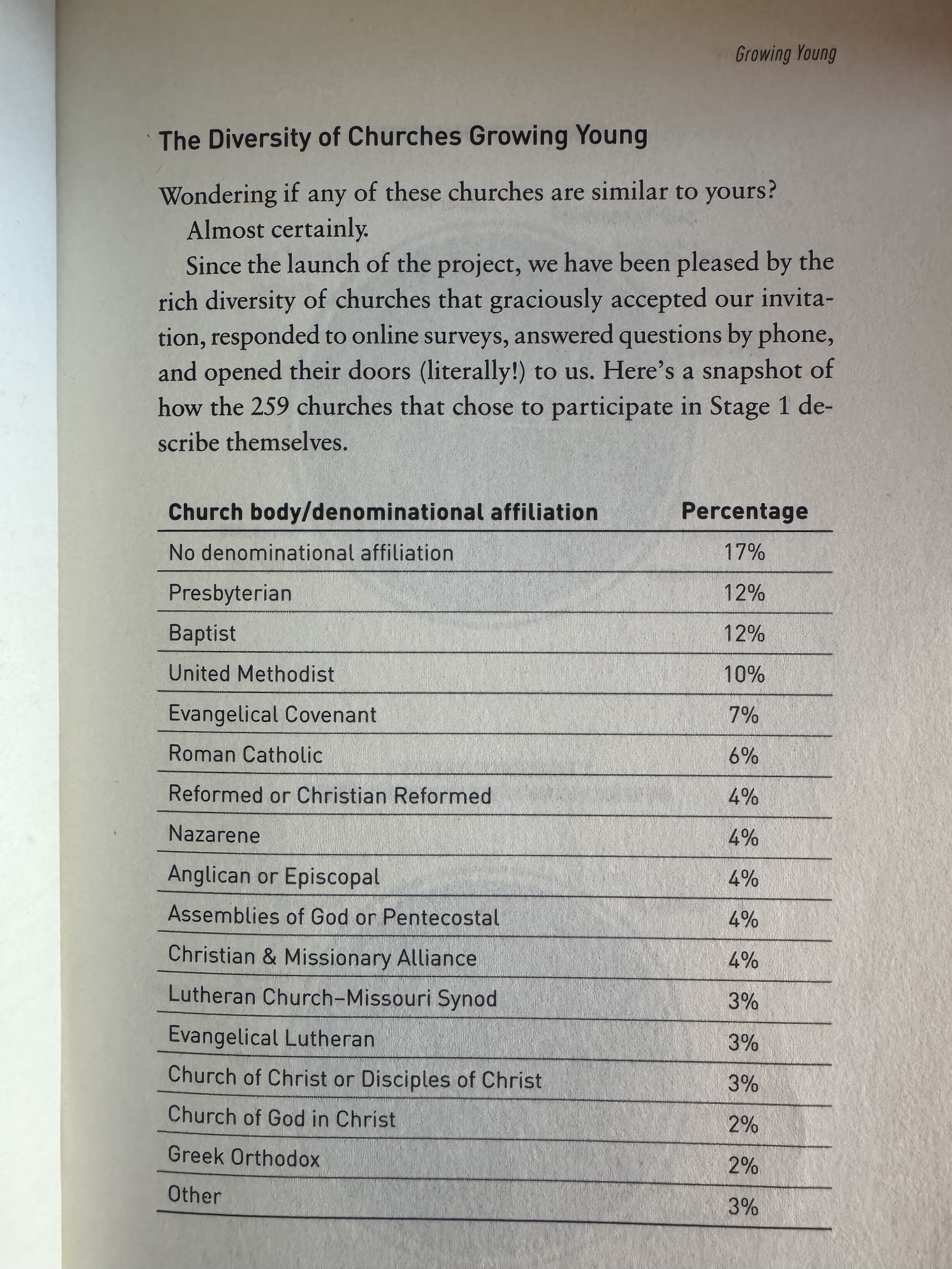Featured Resource: Growing Young
What is Growing Young?
Growing Young began as a research study at Fuller Youth Institute and has grown to a movement across denominations, traditions and church sizes.
Here’s how authors and researchers Dr. Kara Powell, Jake Mulder and Brad Griffin describe the study:
Churches are losing both members and vitality as increasing numbers of young people disengage. Based on groundbreaking research with over 250 of the nation's leading congregations, Growing Young provides a strategy any church can use to involve and retain teenagers and young adults. It profiles innovative churches that are engaging 15- to 29-year-olds and as a result are growing--spiritually, emotionally, missionally, and numerically. Packed with both research and practical ideas, Growing Young shows pastors and ministry leaders how to position their churches to engage younger generations in a way that breathes vitality, life, and energy into the whole church.
Diverse Denominational Representation
The churches studied in "Growing Young" span a broad spectrum of Christian denominations. This diversity highlights that the strategies for engaging young people are not confined to a specific tradition or style of worship. Instead, they are universally applicable across the ecclesiastical landscape, making "Growing Young" a valuable resource for any church looking to deepen its connection with youth.
"Growing Young" provides six foundational strategies that have proven effective in attracting and retaining younger church members:
Unlock keychain leadership.
Instead of centralizing authority and power others - especially young people .Empathize with today's young people. Instead of judging or criticizing, step into the shoes of this generation.
Take Jesus’ is message seriously. Instead of asserting formulaic gospel claims, welcome young people into a Jesus-centred way of life.
Fuel a warm community. Instead of focussing on cool worship or programs aim for warm here and inter-generational friendships.
Prioritize young people (and families) everywhere. Instead of giving lip-service to how much young people matter look for creative ways to tangibly support resource and involve them in all facets of your congregation.
Be the best neighbours. Instead of condemning the world outside your walls, enable young people to neighbor, well locally and globally.
Unsurprisingly, these are the same sorts of findings and recommendations coming out of our second Capstone project studying the spiritual needs of Gen-Z (those born between 1996 and 2010). Read more about Gen-Z in this week’s post.
Apply the Research to Your Context
What new methods might you adopt to welcome and engage young people more effectively?
How can your church adapt its programs to foster greater intergenerational cohesion?
For a deeper understanding and practical application of these strategies, considering forming a study group to read and discuss "Growing Young" within your leadership teams. Or take the assessment to see where your church falls in the research findings.
And let us know how we can help you in this journey!



